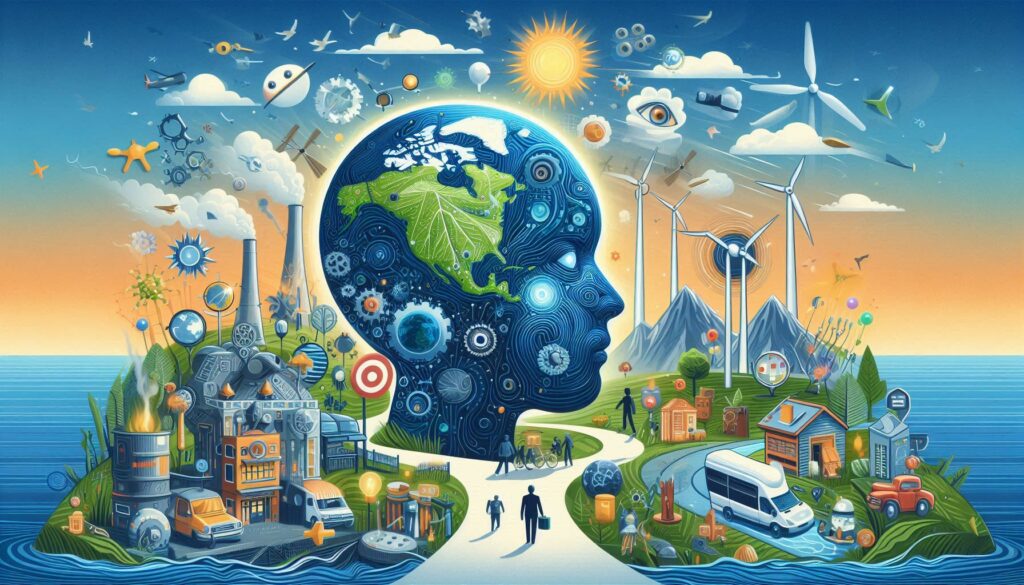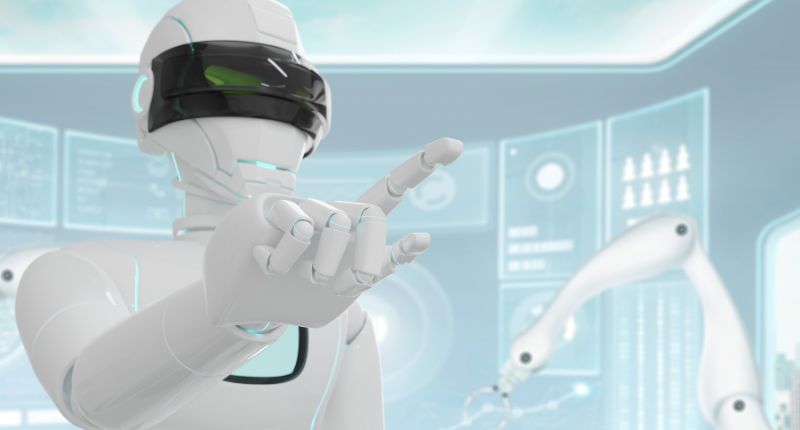The clock is ticking on climate change. With rising global temperatures, melting ice caps, and extreme weather events becoming the norm, the need for innovative solutions has never been more urgent. Enter Artificial Intelligence (AI)—a game-changer in the fight against environmental degradation. While AI is often celebrated for its role in tech and business, its potential to drive sustainability is a story still unfolding. This article dives deep into how AI is reshaping climate action, from monitoring ecosystems to optimizing renewable energy, and the challenges we must address to harness its full potential.
1. AI in Environmental Monitoring: The Eyes and Ears of the Planet
Satellite Imagery and Deforestation Tracking
Imagine a world where deforestation in the Amazon is detected in real-time, or illegal fishing operations are halted before they damage marine ecosystems. AI-powered satellite analysis is making this possible. Platforms like Global Forest Watch use machine learning to analyze terabytes of satellite data, identifying deforestation hotspots with 90% accuracy. By alerting authorities faster than manual methods, AI helps enforce conservation laws and protect biodiversity.
Wildlife Conservation and Anti-Poaching Efforts
In Africa, AI-driven systems like TrailGuard AI use camera traps and sensors to monitor endangered species like rhinos and elephants. Algorithms analyze movement patterns to predict poaching activities, enabling rangers to intervene proactively. Similarly, Cornell University’s BirdNET app identifies bird species from audio recordings, aiding in tracking migration shifts caused by climate change.
Pollution Detection and Air Quality Control
Cities like Beijing and Delhi grapple with toxic air, but AI is turning the tide. IBM’s Green Horizon Project predicts pollution levels by analyzing weather data, traffic patterns, and industrial emissions. Meanwhile, startups like BreezoMeter offer hyper-local air quality indexes, helping individuals avoid polluted areas. These tools empower governments to implement targeted policies, like temporary factory shutdowns or traffic rerouting.
2. Boosting Energy Efficiency: Smarter Grids and Renewable Integration
Smart Grids: Balancing Supply and Demand
Traditional power grids are inefficient, often wasting energy during transmission. AI-driven smart grids, however, dynamically balance supply and demand. For example, Google’s DeepMind reduced energy consumption in data centers by 40% using AI to predict cooling needs. On a larger scale, companies like AutoGrid optimize energy distribution, integrating renewable sources seamlessly even when the sun isn’t shining or the wind isn’t blowing.
Optimizing Renewable Energy Output
Wind and solar farms face variability, but AI is improving predictability. DeepMind’s neural networks forecast wind power output 36 hours ahead, boosting the value of wind energy by 20%. Similarly, solar farms use AI to adjust panel angles in real-time, maximizing energy capture. In India, the startup SenseHawk employs drones and AI to inspect solar panels for defects, ensuring peak efficiency.
AI in Building Management
Buildings account for 40% of global energy use. AI systems like BrainBox AI retrofit existing structures with sensors that optimize heating, cooling, and lighting. The Edge in Amsterdam, hailed as the world’s smartest building, uses AI to cut energy use by 70% while enhancing occupant comfort.
3. Sustainable Agriculture: From Precision Farming to Food Security
Precision Farming: Doing More with Less
Agriculture consumes 70% of the world’s freshwater and contributes 24% of greenhouse gases. AI is revolutionizing this sector through precision farming. John Deere’s See & Spray machines use computer vision to target weeds with herbicides, reducing chemical use by 90%. Startups like CropX analyze soil moisture data to optimize irrigation, conserving water while boosting yields.
Predicting Crop Yields and Climate Resilience
Climate change disrupts growing seasons, but AI models can predict crop failures months in advance. The International Rice Research Institute uses AI to develop climate-resistant rice varieties, while Kenya’s Apollo Agriculture offers farmers AI-driven advice via SMS, improving yields by 50% in drought-prone regions.
Reducing Food Waste
A third of all food produced is wasted. AI apps like Too Good To Go connect consumers with surplus meals from restaurants, while companies like Winnow track kitchen waste in hotels, cutting food waste by 50% through data analytics.
4. Climate Modeling: Predicting the Unpredictable
Improving Climate Forecast Accuracy
Traditional climate models struggle with complexity, but AI excels at processing vast datasets. Microsoft’s AI for Earth initiative partners with climatologists to refine models, predicting regional impacts like sea-level rise with unprecedented precision. These insights help coastal cities like Miami prepare infrastructure for future flooding.
Disaster Response and Early Warning Systems
Wildfires, hurricanes, and floods are intensifying. AI tools like California’s ALERTWildfire system analyze camera feeds and satellite data to detect fires within minutes. Meanwhile, Pakistan’s Flood Forecasting Model uses machine learning to predict monsoon impacts, saving thousands of lives through timely evacuations.
5. Cutting Carbon Footprints: AI in Transportation and Industry
Smart Transportation Networks
Transport contributes 25% of global CO₂ emissions. AI is optimizing routes for logistics giants like Maersk, reducing fuel use by 15%. Electric vehicle (EV) companies leverage AI for battery management—Tesla’s Autopilot minimizes energy consumption through efficient driving patterns.
Carbon Capture and Storage (CCS)
Scaling CCS technology is critical for achieving net-zero goals. Startups like Carbon Engineering use AI to identify optimal locations for CO₂ storage, while Climeworks’ direct air capture plants employ machine learning to enhance efficiency.
6. Policy and Governance: Data-Driven Decision Making
Informing Climate Policies
AI analyzes datasets to guide policymakers. The UN’s Climate Trace initiative tracks global emissions in real-time, holding nations accountable. Cities like Stockholm use AI simulations to test policies, such as congestion pricing, before implementation.
Global Collaboration Through AI
Climate change knows no borders. AI platforms facilitate international cooperation—for example, the EU’s Destination Earth initiative creates a digital twin of the planet to model climate scenarios collaboratively.
7. Challenges and Ethical Dilemmas
The Carbon Cost of AI
Training large AI models can consume massive energy—GPT-3’s training emitted over 500 tons of CO₂. Solutions include using renewable energy for data centers and developing energy-efficient algorithms.
Bias and Accessibility
AI models trained on biased data may overlook vulnerable communities. Ensuring inclusivity requires diverse datasets and partnerships with local stakeholders.
8. The Road Ahead: Innovations and Collective Action
Emerging technologies like quantum computing could accelerate climate modeling, while AI-driven circular economies promise zero-waste futures. However, success hinges on collaboration—governments, corporations, and citizens must unite to prioritize sustainability.
Conclusion: AI as a Catalyst for Change
AI isn’t a silver bullet, but it’s a powerful ally in the climate fight. From safeguarding forests to revolutionizing energy systems, its applications are vast—yet challenges like ethical AI use and equitable access remain. By fostering innovation and inclusivity, we can steer this technology toward a sustainable future. The question isn’t whether AI can save the planet, but whether we’ll wield it wisely.


